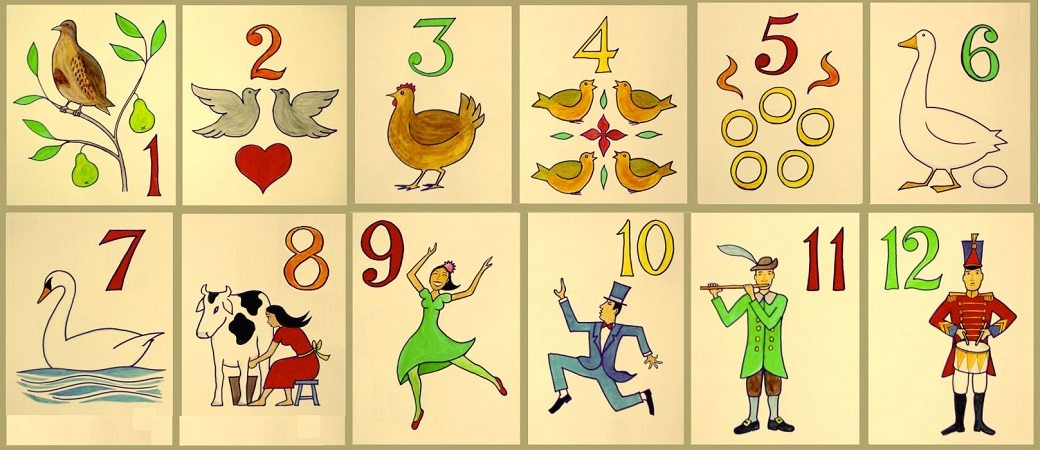
My eight-year-old son, Steven, has oculocutaneous albinism, a condition in which a lack of pigment in the eyes and skin causes varying degrees of poor vision, light sensitivity, and vulnerability to sunburn. My son’s vision is only mildly affected, but even so, he must wear dark glasses every time he sets foot out-of-doors.
My friend Holly Miller’s eleven-year-old son, Hank, also has albinism, and in Hank’s case, the effects on his vision are severe. He is legally blind. By the time Hank entered second grade, Holly and her husband Jeff were aware that reading the printed word was an exhausting and difficult experience for their son. They realized he needed to learn Braille, the tactile reading and writing code for the blind. For three years, Holly and Jeff worked to convince their New Jersey school district that Hank was a candidate for Braille instruction — three years of IEP (Individualized Education Plan) meetings, expensive outside assessments with reading specialists, and frustrating roadblocks. Finally, as a last resort, they took the matter to court. Earlier this month, an administrative law judge ruled that Hank “was improperly denied instruction in Braille” and the school district must begin providing that instruction in the upcoming academic year.
I asked Holly to share the story of Hank’s journey toward Braille.
Melissa Wiley: Tell us about Hank’s vision. What does it mean to be legally blind? How exactly does albinism affect vision?
Holly Miller: Being legally blind means Hank does have vision but it’s rather poor, approximately ten percent of “normal” vision. His visual acuity is 20/200 with his glasses on. For the average person who wears glasses, you have terrible vision without your glasses but put them on and you can see 20/20. What do those numbers mean? What someone with perfect vision can see at 200 feet, Hank would have to be within 20 feet to see the same thing. Bringing it down to smaller numbers, if you can hold a paper 20 inches away to read it, he has to hold it two inches from his eyes.
There are three primary factors that affect vision in people with albinism. First, a lack of pigment in the iris allows too much light to flood the eyes. His pupils do contract when exposed to bright light, but this doesn’t have any light blocking affect. It causes a sort of white-out condition in very bright lights. Extremely bright light is actually painful for Hank. He always wears a hat and sunglasses outdoors, but even with them there are times he can’t keep his eyes open.
Next, the retina and optic nerve are underdeveloped. That means no matter what information comes through the front of the eye, the brain will not get a complete picture. Some people liken it to a very low-resolution digital photograph. Glasses do little to improve that. Last but not least is involuntary muscle movement of the eyes called nystagmus. Hank’s eyes are constantly in motion, which makes focusing on print difficult.
MW: How did you come to the decision that Hank needed to learn Braille?
HM: While Hank is able to see print and read for short periods of time, his eyes fatigue very quickly. After just a few minutes he suffers a significant drop in speed, comprehension, and retention. It’s physical work for him to read. The more energy he has to expend to see the words, the less he is able to absorb what he’s reading.
After extensive evaluations, we determined he had no reading or learning disabilities — the only thing holding back his reading ability was his vision. I like to think about it as the difference between reading chick lit on the beach in the afternoon and reading tax code in a hard desk chair at eleven pm. You know all the words in both books, but which one is going to be faster and easier to read? How much of that tax code are you actually going to understand and retain once you close the book?

In the very early years of school, printed materials naturally use a large font and the reading tasks are quite short for all children. An example would be the text in a Dr. Seuss book. The words are big, with generous spacing and just a few words on a page. Kids like Hank will often be right on target with their peers during that phase of their education. Too often the professionals aren’t taking future needs into consideration. As the grades advance, the print gets smaller and denser. The assignments become more robust. Visually impaired kids start to fall behind. We didn’t want that to happen to Hank and felt Braille was the appropriate intervention.
Unfortunately our school district and the state Commission for the Blind did not agree. Also unfortunately, this is not an uncommon situation. What made it so frustrating was that we were seeing the signs as early as second grade. We asked the district to conduct evaluations to determine if there was a problem and if Braille would be an appropriate remedy. They did perform some evaluations but not complete ones. Our biggest complaint is that the district would not perform any sustained reading tests. We felt this was critical to assessing Hank’s abilities and highlighting any weaknesses. The district failed to do that.
We had outside assessments done and provided reports with detailed data. The district stood firm in their position that Braille was not appropriate because they viewed Hank as a “sighted reader.” We started gradually, an article or research paper here, an advocate there. Initially I was sure that the school district simply needed more information to understand why we felt Braille was so important. I wasn’t looking for a fight.
Eventually it became clear that other people had decided what was best for our child and we were not being given the opportunity to have meaningful participation in the decision making process. Once it reached that point, we felt there was no other choice than to take it to the legal arena.
MW: But doesn’t new technology make Braille obsolete?

HM: On the contrary, today’s technology makes Braille even more available and portable than ever before. Instead of large paper Braille volumes there are now refreshable Braille displays available for computers and also in small, portable Braille notetakers. Notetakers have essentially the same functions as a laptop computer, simply without a screen. Small pins raise to form the Braille characters. Once they are read, they retract and pop up again to form a new line. This can be used for books, documents, even navigating the internet.
Translation software allows students to do their work in Braille but print out a print copy for the teacher. Teachers can create a worksheet or handout in print on their computers, and software will convert these to Braille. Many refreshable Braille displays are now equipped with Bluetooth and can pair with all the i-devices! This gives a Braille user instant access to almost anything.
Hank does have some other equipment such as a Kindle and an electronic magnification device. These are helpful to some degree. The Kindle allows him to adjust the font size depending on how his eyes are feeling at the moment. The e-ink display is easier on his eyes than devices that are backlit such as a Nook or iPad. His electronic magnifier works with reading materials on the desk as well as distance viewing — it’s great for seeing things on the blackboard. But as helpful as these devices are, they force a child with 10% of normal vision to use that vision 100% of the time.
MW: Why Braille, though? What about audio books and other recorded materials?
HM: Audio books are wonderful; I have enjoyed them myself when riding in the car or cleaning the house. Listening is not reading, though. You don’t learn spelling, punctuation, how pages are formatted, by listening. Listening is a passive activity whereas reading is active. Reading Braille is reading. It activates the same areas of the brain, it allows for skimming or a quick double back to recheck a phrase you didn’t quite catch. Writing in Braille allows a blind student to take notes and review them in the same fashion a sighted student does. Audio books can be a very useful option for a blind student, but they should be an option, not the only alternative available. Can you imagine the outcry if schools said they were going to stop teaching children to read and only have them listen? I don’t think that would go over very well!
Here’s how the judge put it in her ruling: “The comment [by a district representative] that H.M. has to stay in a sighted world shows a bias against Braille because it infers that Braille is a lesser medium than the technology that she recommends. H.M. is a legally blind student who has functional vision. He can live in the sighted world learning and using Braille as an alternative reading tool, along with the assistive technology. It is more logical that doing so will enhance his learning, rather than thwart it.”
MW: I’m so glad the ruling came down on Hank’s side. Where do things go from here? Will Hank have a Braille tutor at school?
HM: The next step is to have a meeting with the district to work out the details. Part of the ruling is that Hank will receive Braille instruction in school five days a week. Frequent and intense instruction is critical to success. Often students are only provided with Braille instruction one or two days a week. When they haven’t mastered it after a period of time, the school declares it a failed experiment and removes it from the student’s program. If a sighted student was only given reading instruction one or two days a week for an hour or less, how long would it take them to learn how to read effectively? Exactly…
Braille is taught by a Teacher of the Visually Impaired (TVI), sometimes called a Teacher of Blind Students (TBS). This is a specialized degree added to a base teaching degree. The district will be responsible for providing any appropriate equipment. This typically includes a Braille notetaker, a Braille printer, a Perkins manual Braille writer, and for on-the-go-notes, a slate and stylus.
MW: And what about books for pleasure reading? Is it hard to find kids’ books in Braille?
HM: There is a wealth of Braille reading material available. For U.S. students, there is a free service called Bookshare that has thousands of titles available to download in Braille, large print, and audio format. There’s also a great deal of material available through the National Library Service for the Blind. Pair that with a refreshable Braille display/notetaker, and Braille becomes instantly available and portable!
MW: What advice do you have for other parents and students in your situation?

HM: Trust your gut and don’t give up! If you think your child’s needs aren’t being met, you can change it! The most important thing is to educate yourself on how the system and the IEP process work. Get a copy of the special education laws specific to your state and read them. Yes, it’s boring. Do it anyway. There are many great books and websites out there about how to make your case effectively.
Document everything. If it’s not in writing, it didn’t happen. Keep your letters clear, concise, and professional. Go ahead and write that very very angry letter. Then delete it and write something that sounds like you are a sane, reasonable parent. Assume anything you write to your school will one day be read by a judge, and think about what impression you want to leave with that judge.
Find a local or online support group specific to your child’s needs. The been-there-done-that-crowd will have a wealth of knowledge for you. We have gotten tremendous help from the National Federation of the Blind. Initially it was emotional and informational support. Once we knew it would have to go to court, they were also able to provide invaluable legal support. Unfortunately preparing a winning case can be expensive. Many parents are forced to give up even though they are absolutely right about their child’s needs. We hope that our case can be used as an example and other school districts will be convinced to provide appropriate services.
For more information about Braille instruction, check out Future Reflections, the National Federation of the Blind’s quarterly magazine for parents and teachers of visually impaired children.




